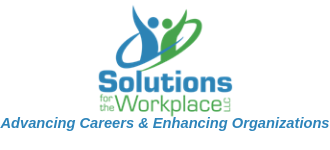Do you follow the C.R.A.P. method for job search? If you just Click, Read, Apply, and Pray, you are doing yourself a disservice and not likely to get the results you are seeking. Instead of just applying willy-nilly and hoping for the best, you need a planned and structured approach to your search.
Here are some ideas for a successful search, whether in the federal or private sector:
• Start with the end in mind. Take the time to think about what kind of job you’re targeting. What job title, functional roles, and industry are you interested in? Any specific companies / organizations you’d like to work for? If your ideal job was available, how would you describe it?
• Read job postings carefully. Are you qualified for the job? Most postings are pretty clear about what they are looking for—if you don’t have the qualifications, don’t waste your time.
• Target your resume. Be sure to target your resume to include key words for specific job postings—each time!
• Network. No one likes it but everyone agrees that it works. This is an important part of your strategy.
• Take time to organize your job search. Outline a strategy and then use your plan to create a weekly list of activities.
• Create a schedule each day for your job search activities. Make a list each day of the activities you want to complete. However, if an interview or networking opportunity comes up, of course you will rearrange your schedule to fit it in!
• Set aside a workspace. Designate a specific area to use when conducting your job search. This should be an area free of distractions.
• Devote sufficient time. The more time and energy you devote to your job search, and the more aggressively you network, the faster your job search will proceed. If you are not currently working, commit yourself to a minimum of 40 hours per week devoted to your search campaign. If you are currently working, devote 10 hours per week at a minimum.
• Recognize that your motivation is going to waver, depending on the success (or lack of success) you are having in reaching your job search goal. Reward yourself for effort, not for results.
• Get the support of a team to help. You don’t have to go it alone in your job search. Ask your family and friends to support you. Join a job club. Use the services offered by your city, county, or state employment office. Look at O*Net (https://www.onetonline.org/). Contact your university alumni association. Hire a resume writer and/or career coach.
• Enlist an accountability partner. Recruit one person to support, encourage, and motivate you in your job search. This can be a friend, another job seeker, or a coach/counselor. (Choose someone who can be objective with you — and critical of your efforts — when they need to be. That role might be too difficult for a spouse/partner.)
• It can be easier to get a job if you have a job (even if the job isn’t related to the job you want). Employers sometimes see hiring someone who is unemployed as “riskier” than hiring someone who is already working.
• Consider relocation. If you live in an area with high unemployment — especially in your industry — consider whether moving to another city, state, or region would improve your chances of getting hired.
